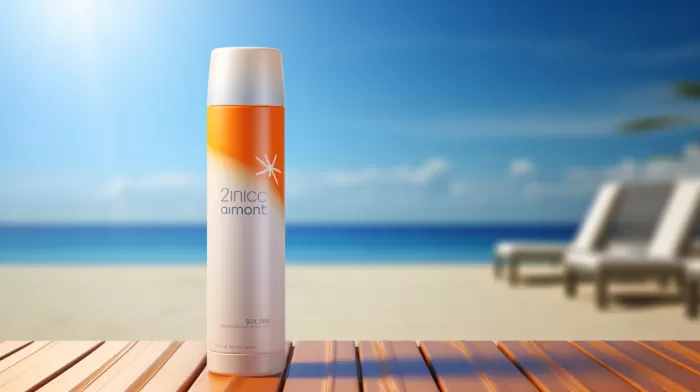We all know that wearing sunscreen protects us from harmful ultraviolet (UV) rays and skin cancer. But did you know that your skin needs sunlight to produce vitamin D, and wearing sunscreen all the time might prevent you from reaping this benefit? And to add more to your sunscreen worries, scientists have identified a new danger from sunscreens — the toxicity of zinc oxide nanoparticles. So, buckle up as we dive deeper into this new sunscreen danger and explore safer alternatives.
The risks of zinc oxide nanoparticles
Zinc oxide is a widely used material in sunscreens because of its ability to protect your skin from both UVA and UVB radiation. It is a physical blocker that simply sits on the surface of your skin and reflects the sun’s rays, unlike chemical blockers which absorb the UV rays and convert them into heat.
With the advancement of technology, many sunscreens have started using zinc oxide in the form of nanoparticles. These particles, smaller than 100 nanometers, allow the sunscreen to be more transparent and blend easily with the skin, as opposed to older formulations that left a thick, white layer.
However, recent research has shown that these nanoparticles are toxic. They are more harmful to the body than equivalent amounts of soluble zinc. In fact, direct particle-to-cell contact in the colon is required to cause cell death. So if someone accidentally ingests sunscreen, it could lead to severe complications.
There is an ongoing concern about the potential toxicity of nanoparticles of various materials because they may have different physical and chemical properties than their larger counterparts. Nanoparticles, which are barely 1/50,000 the width of a human hair, are found in many foods, cosmetics, and other consumer products. It has become essential to understand their impact on our health.
Accidental ingestion of sunscreen: cause for concern?
While ingesting sunscreen might seem like an unlikely event, it can actually happen more often than we think. Young children, in particular, are prone to accidentally consuming sunscreen when playing outdoors. Think about how often they may put their fingers in their mouths or lick their lips while wearing sunscreen.
Researchers specifically mentioned that unintended exposure to nano-sized zinc oxide from children accidentally eating sunscreen products is a valid public concern. Therefore, it is essential to look into the effects of these nanomaterials in the colon.
Making informed choices about sunscreen
With this newfound knowledge about the potential dangers of some sunscreen ingredients, it’s essential to make informed choices when selecting a sunscreen for you and your family.
Opt for sunscreens that use non-nano zinc oxide or titanium dioxide as the active ingredient. They offer the same broad-spectrum UV protection but without the risks associated with nanoparticles. You can also choose sunscreens with a high percentage of zinc oxide and titanium dioxide, as they generally provide better protection.
To reduce the risk of accidentally ingesting sunscreen, ensure that you and your children wash your hands thoroughly after applying it. Also, consider using a lip balm or lipstick with sun protection factor (SPF) to avoid licking sunscreen off your lips. Finally, pay attention to any product recalls or public warnings related to sunscreen ingredients.
Other sun protection strategies
While sunscreen is important, it’s not the only way to protect yourself and your loved ones from the sun’s harmful rays. Here are some additional sun protection strategies you can incorporate into your daily routine:
- Seek shade: Whenever possible, find shade under a tree, umbrella, or another shelter, especially between the hours of 10 a.m. and 4 p.m. when the sun is at its strongest.
- Wear protective clothing: Cover up as much as possible with long-sleeved shirts, pants, and a wide-brimmed hat to protect your face, neck, and ears.
- Wear sunglasses: Invest in a high-quality pair of sunglasses to protect your eyes from harmful UVA and UVB rays. Look for glasses labeled “100% UV protection” or “UV400.”
- Time your outdoor activities: If possible, schedule your outdoor activities in the early morning or late afternoon when the sun’s rays are less intense.
- Stay vigilant: Regularly check your skin for any changes or irregularities. Consult a dermatologist if you notice any suspicious moles, freckles, or bumps.
The bottom line
Sunscreen plays a crucial role in protecting our skin from harmful UV rays and reducing the risk of skin cancer. However, we must be aware of the potential dangers associated with certain ingredients, such as zinc oxide nanoparticles. By making informed choices about the sunscreens we use and incorporating other sun protection strategies, we can continue to enjoy the great outdoors without compromising our health.



